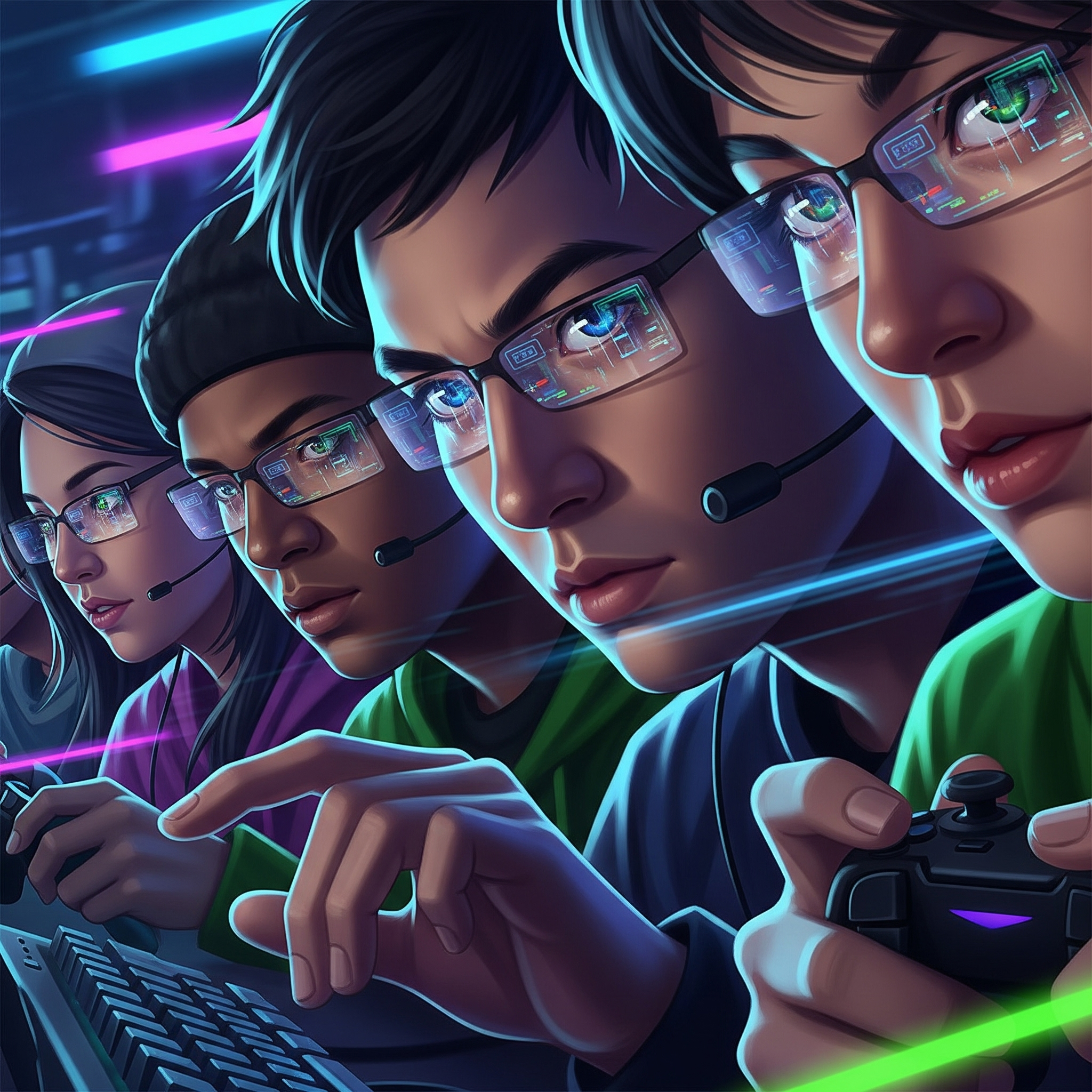In the electrifying world of competitive gaming, merely knowing the controls isn’t enough. The difference between a casual player and a champion often lies in the mastery of advanced strategies, deep understanding of game mechanics, and the psychological edge over opponents. Whether you’re climbing the ranks in a fast-paced FPS, orchestrating team fights in a complex MOBA, or outmaneuvering rivals in a strategic RTS, elevating your gameplay requires more than just raw mechanical skill. This guide delves into the sophisticated tactics that separate the contenders from the mere participants.
I. The Art of Information Gathering: Beyond the Mini-Map
Information is power, and in competitive gaming, it’s currency. While keeping an eye on your mini-map is fundamental, advanced players actively seek out and process far more.
- Aggressive Scouting & Vision Control: Don’t just place wards or send out scouts passively. Use them to predict enemy movements, deny their farm, or cut off escape routes. In games with fog of war, intelligent vision placement can reveal crucial rotations, giving your team a decisive advantage.
- Audio Cues Mastery: Many games offer subtle audio cues – footsteps, reload sounds, ability activations, environmental destruction – that communicate invaluable information about enemy positions and intentions. Train your ears to pick up on these nuances; they can be as revealing as visual information.
- Cooldown Tracking: High-level play involves mentally (or even physically, for some pros) tracking enemy cooldowns for critical abilities, ultimate moves, or summoner spells. Knowing when an opponent’s key defensive spell is down opens a window for an aggressive play that might otherwise be too risky.
- Predictive Analysis: Combine all gathered information to predict enemy actions. If you see a cluster of enemies missing from their lane, where are they likely headed? If an enemy just used their escape ability, what’s their most vulnerable path?
II. Strategic Decision-Making: The Brains Behind the Brawn
Mechanical skill gets you far, but superior decision-making wins games.
- Risk vs. Reward Assessment: Every action carries a risk. An advanced player constantly evaluates whether the potential gain (a kill, an objective, map control) outweighs the potential loss (death, giving up an objective, losing map presence). Sometimes, a safe retreat is the smartest play, even if it feels less exciting.
- Resource Management (Beyond Health & Mana): This includes managing ammunition, consumable items, ultimate charges, and even game-specific resources like “economy” in an RTS or “grenades” in an FPS. Don’t just use resources; optimize their usage for maximum impact at critical moments.
- Objective Prioritization: Not all objectives are equal. Sometimes sacrificing a kill for a tower or a dragon is the correct call. Understand the win conditions of your specific game and prioritize actions that directly contribute to those conditions. This also means knowing when to concede an objective that’s unwinnable.
- Adaptability and Counter-Strategy: The meta constantly evolves, and opponents rarely stick to a script. Be ready to adapt your strategy on the fly. If your initial plan isn’t working, identify why and formulate a counter-strategy. This might involve changing item builds, altering team compositions, or adjusting your positioning.
III. Teamplay & Communication: The Synchronized Attack
Even in solo queues, effective teamplay elevates individual performance.
- Concise & Effective Communication: Avoid unnecessary chatter. Communicate critical information clearly and quickly: “Enemy top, pushing,” “Ult ready,” “Focus healer.” Use pings effectively to direct attention without voice spam.
- Role Understanding & Synergy: Know your role and the roles of your teammates. How do your abilities synergize? How can you enable your carries, protect your support, or engage as a tank? A well-executed combo between teammates can swing an entire fight.
- Controlled Aggression & Disengages: When to commit and when to retreat as a team is paramount. Advanced teams understand the “engage window” – the precise moment to go all-in – and also have clear disengage plans when a fight turns sour.
- Shot Calling: In organized play, a designated shot caller can be invaluable. This individual makes crucial tactical decisions for the team, coordinating engages, objective attempts, and rotations. Even without a formal shot caller, good communication helps collective decision-making.
IV. Psychological Warfare: The Mind Games
Competitive gaming isn’t just about what’s on screen; it’s about what’s in your head and your opponent’s.
- Tilt Control: Recognize when you or a teammate is “tilting” (becoming frustrated and playing poorly). Have strategies to reset your mental state, whether it’s a quick break, a deep breath, or a positive affirmation.
- Exploiting Opponent Habits: Watch for patterns in your opponents’ play. Do they always reload after every kill? Do they habitually peek the same corner? Exploit these predictable behaviors.
- Feints and Fakes: Use subtle movements or actions to bait opponents into making mistakes. Pretend to push one lane to draw enemies away from a different objective, or feign a retreat to draw out an aggressive pursuit.
- Maintaining Composure: High-pressure situations can lead to panicked decisions. Practice staying calm under fire, relying on muscle memory and strategic thinking rather than impulsivity.
Conclusion
The journey to becoming a top-tier competitive gamer is continuous. It demands not only dedication to refining your mechanical skills but also a profound investment in understanding game theory, mastering information flow, making intelligent strategic choices, fostering seamless team synergy, and controlling the psychological battlefield. By integrating these advanced strategies into your gameplay, you’ll not only see significant improvements in your performance but also gain a deeper appreciation for the intricate chess match that is competitive gaming. So, queue up, apply these tactics, and get ready to dominate the meta!
